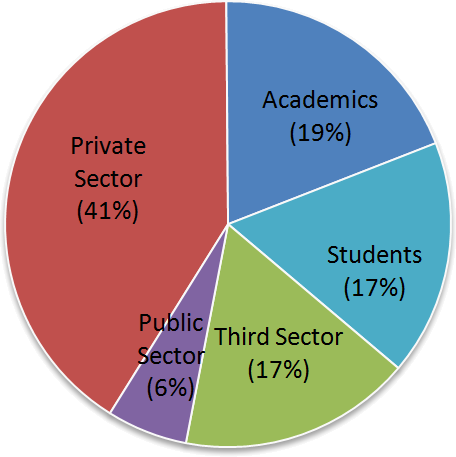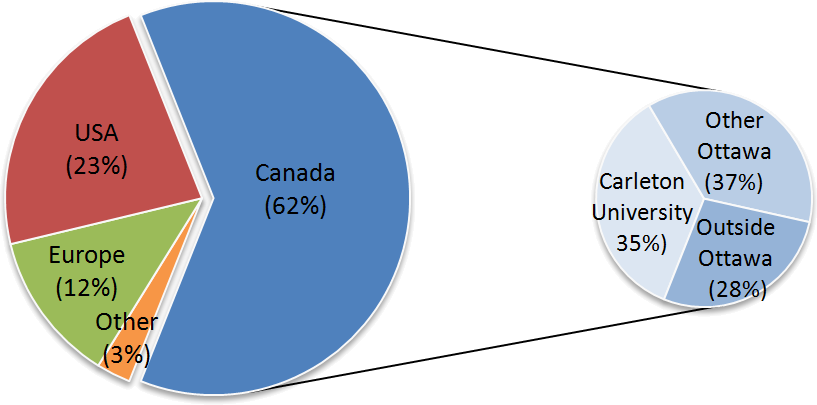“Recently, a Carleton University student asked his professor "how do you make money from open source?" An excellent question for which there is no short answer. If anything, it appears to lead to a conundrum: aren't the motivators behind open source diametrically opposed to those that drive business? Dig deeper and you'll find that open source and business have much to gain from each other. The difficulty is finding accurate information from those who understand both the business and open source environments.”
Dru Lavigne, Editor-in-Chief (2007-2010)
Introducing the OSBR, July 2007
Abstract
This is the last article to be published in the Open Source Business Resource (OSBR). In September 2011, the OSBR will become the Technology Innovation Management Review. In this article, we look back upon the changes in the landscape of open source business and in the OSBR itself from the time it was first published in July 2007 until its last issue in August 2011. Finally, we look ahead to the upcoming changes that will be embodied by the Technology Innovation Management Review.
Introduction
In July 2007, the OSBR was launched as “a resource for promoting an open dialog on the issues involved with making money from open source”. In a recent conversation with Dru Lavigne, the Editor-in-Chief of the OSBR for its first three years of existence, she described 2007 as a time when few companies were making money from open source, largely because the strategic implications of open source were poorly understood. Even when companies had well-considered business reasons for using open source approaches, many encountered significant challenges in shifting their perspectives, adapting their processes, and understanding how to effectively interact with open source communities.
As a publication that drew upon expertise from business and academia, the OSBR was “an opportunity for those who wish to learn more about the business of open source to benefit from the experience of those who have already studied the success factors and from those who have successfully integrated open source into their business strategy.” From the beginning, the emphasis was on practical ideas that readers could apply within their own organizations.
While the motivation to create the OSBR was triggered by the question of how to make money with open source, the answer was not readily answered with the information available at the time, nor was this simple question likely to have a simple answer. Over the past four years, we have published the insights of over 300 experts and we hope we have helped readers better understand the question and find answers that apply to their own situations. In the next section, we will look more closely at the evolution of the OSBR and the articles and authors that have contributed to it.
The Open Source Business Resource
The OSBR is a monthly publication of the Talent First Network and the Technology Innovation Management (TIM) program at Carleton University in Ottawa, Canada. The publication is free of charge; readers can access html or PDF versions of articles online. Authors do not pay to publish their work in the OSBR nor are they compensated for doing so, but they retain full copyright to their individual works under a Creative Commons Attribution 3.0 Unported license.
We have adopted a journal format and all articles are peer reviewed by the OSBR advisory board. The journal format lends itself to a scholarly approach, but the OSBR also publishes non-scholarly articles, which we believe also benefit from the formality and in-depth analysis the format demands. Regardless of their background, we encourage all authors to thoroughly explore their topic and include practical insights gained from experience, and we believe that readers benefit from the diversity of perspectives that this approach enables. Figure 1 shows the diversity of author perspectives in the OSBR in terms of the economic sector(s) that they represent.
Figure 1. OSBR Author Perspectives by Sector

Figure 1 shows one measure of diversity across all issues; however, we also try to maximize the diversity of perspectives along a number of dimensions within each issue. We believe there is great value in bringing multiple perspectives together to discuss a particular topic. This is why most issues of the OSBR have a theme. A theme gives both authors and readers the opportunity to collectively explore a topic in both depth and breadth.
As might be expected from a technology business publication, there is a strong gender bias in the composition of authors: 78% of OSBR authors are male. However, some of the most popular issues of the OSBR have been the themes of “Women in Open Source” (June, 2009) and “Women Entrepreneurs” (July, 2011).
With its origin at Carleton University, many of the articles come from its professors and graduate students and from the local Ottawa community. However, we have actively encouraged perspectives that extend well beyond the city and Canada. In fact, more than half of all articles published in the OSBR have come from authors based outside of Ottawa, as indicated by Figure 2. Similarly, web analytics have shown that approximately 45% of the visitors to the OSBR website are from outside Canada.
Figure 2. OSBR Author Perspectives by Location
In addition to articles, the OSBR has featured Q&A pieces, recent reports, news, and upcoming events, and weekly columns from expert practitioners. In the four years that have passed since the launch of the OSBR, we have published 50 issues, which have been comprised of more than 300 contributions. All of these contributions are organized, formatted, and displayed using open source tools wherever possible, including Scribus for the PDF layout, Open Journal Systems for the website, and a LAMP stack (Linux, Apache, MySQL, and PHP) underneath the hood.
The Technology Innovation Management Review
Carrying on the tradition of the OSBR, the Technology Innovation Management Review (TIM Review) will bring together diverse viewpoints from academics, entrepreneurs, companies of all sizes, the public sector, the third sector, and others to share insights and practical ideas that readers can apply to their own organizations. However, the scope will extend beyond open source, which we now consider a better-understood, mainstream tool for technology businesses.
The TIM Review will focus on the theories, strategies, and tools that help early-stage technology companies succeed. This change formalizes and continues a gradual scope shift that was already occurring in the OSBR. As Figure 3 shows, general articles that would appeal to anyone with an interest in the business aspects of early-stage technology have gradually taken an increasing share relative to articles on “open” topics (e.g., open source, open data, open government, open education) in the OSBR. Open source business will remain a core focus, but it will share the spotlight with topics such as managing innovation, technology entrepreneurship, and economic development.
Figure 3. OSBR Article Topics
In addition to formalizing the expanding scope of the publication, we aim to substantially improve both the levels of collaboration the journal provides and the local and regional outcomes its contributors support. While the OSBR is primarily a dissemination vehicle for fully formed articles, with the TIM Review, we aim to increase opportunities for input before, during, and after ideas and insights are expressed in article form. We also hope to encourage recommendations for issue themes, authors, and guest editors and generally increase the opportunities for feedback and discussion. To help us achieve this goal - and to give the publication a much-needed facelift and richer feature set for collaboration and reader interaction - we are developing a new website based on Drupal, the open source content management platform. We intend to improve this site over time in response to feedback and changing needs.
Conclusion
The OSBR began with the question, “How do you make money with open source?” and while there is no simple answer to this question, we have attempted to shed light on its various dimensions by asking experts in the worlds of business and open source to share their insights and experience. The OSBR has evolved over the course of its 50 issues and in the next issue, we will formalize shifts in its overall scope with the re-launch of the journal under the banner of the Technology Innovation Management Review.
Given that this is the last article to be published in the OSBR before it becomes the TIM Review, we wish to acknowledge the valuable contributions made by the authors, guest editors, columnists, advisory board members, sponsors, and administrative and technical staff over the past four years. In particular, we also would like to recognize the tremendous efforts of Dru Lavigne, the first Editor-in-Chief of the OSBR, and Tony Bailetti, the Director of the TIM program, who together lit the fire and kept it burning brightly. Finally, we wish to thank the readers of the OSBR; we hope you have found value in the insights contained within these pages and we look forward to your ongoing feedback and contributions as we continue to evolve this publication.


